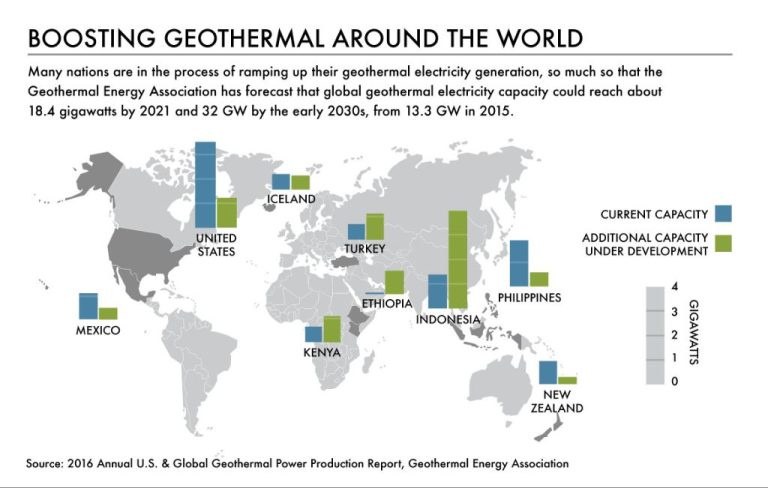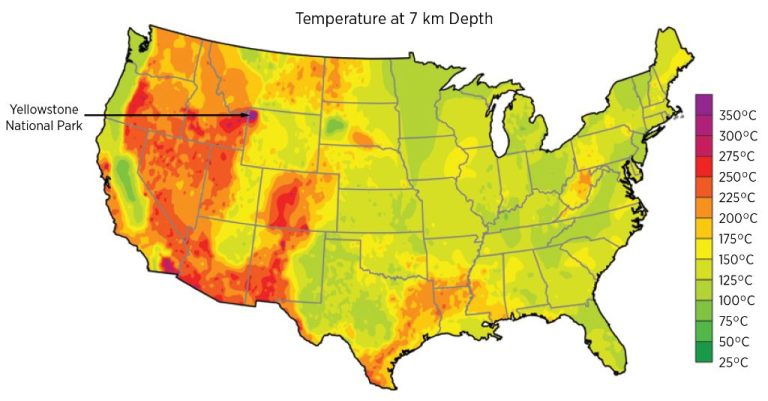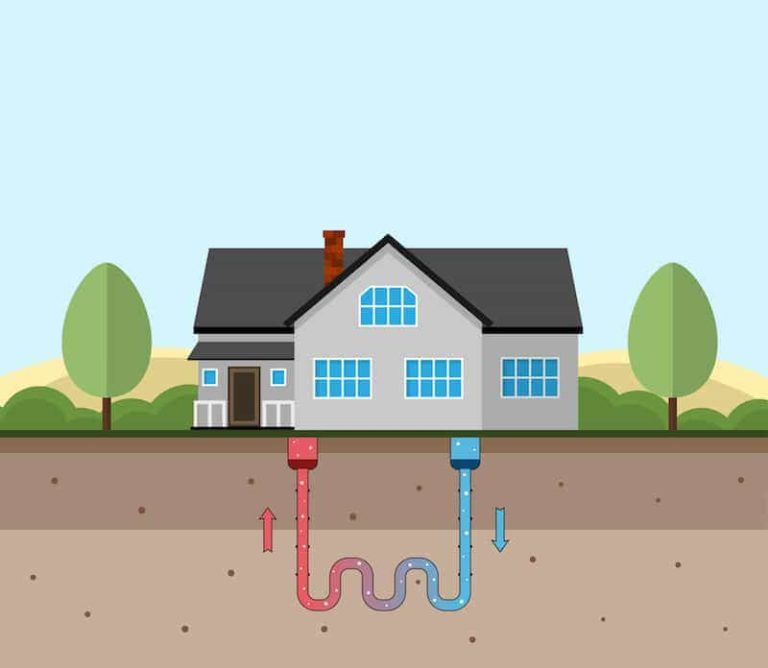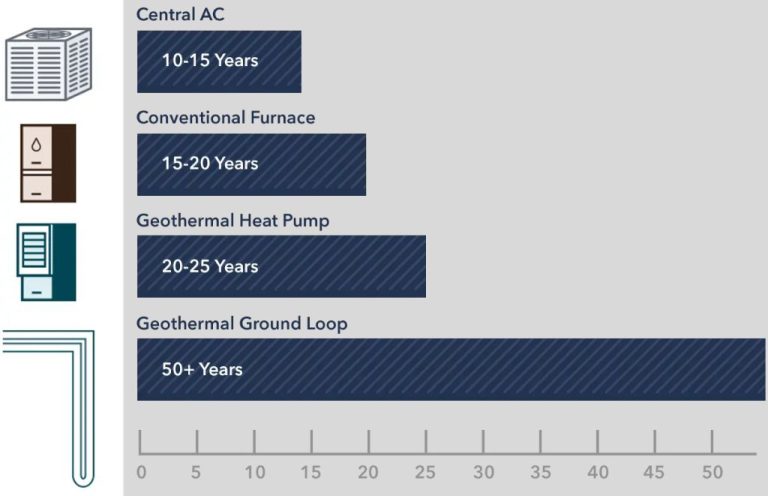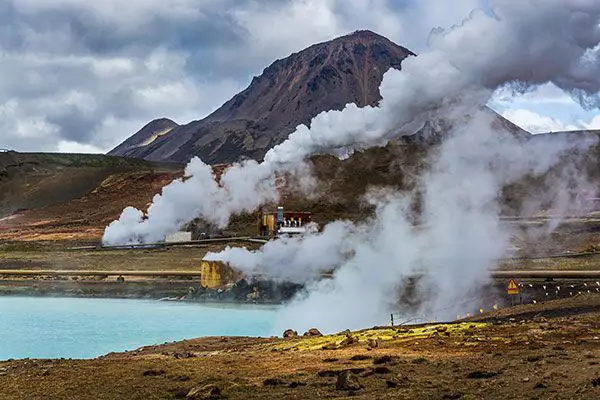How Efficient And Sustainable Is Geothermal Energy?
Geothermal energy is thermal energy generated and stored in the Earth. It comes from the heat within the earth’s core as well as from radioactive decay. This heat can emerge in the form of hot springs, geysers, and steam vents. It can also be tapped just below the earth’s surface using geothermal heat pump systems.
Geothermal energy has been utilized globally for millennia in the form of hot springs for bathing, cooking, and heating. Today, over 80 countries use geothermal energy for electricity production, direct heating, greenhouse heating, aquaculture, and industrial processes. In total, geothermal energy provides about 0.3% of global primary energy consumption.
Geothermal power plants utilize hot water and steam reservoirs found naturally deep underground to spin turbines and generate electricity, similar to traditional power plants. The main difference is that geothermal plants do not burn fuel to boil water. The hot water is naturally occurring and is piped to the surface to produce steam.
Geothermal Power Generation Methods
Geothermal energy is generated using naturally occurring heat from the earth’s core. There are three main types of geothermal resources that can be harnessed for power production:
Hydrothermal resources utilize naturally occurring underground reservoirs of steam or hot water. Geothermal plants tap into these reservoirs to drive turbines and generate electricity. Conventional hydrothermal power plants use geothermal reservoirs of water or steam at temperatures greater than 150°C located at depths of less than 2 kilometers.1
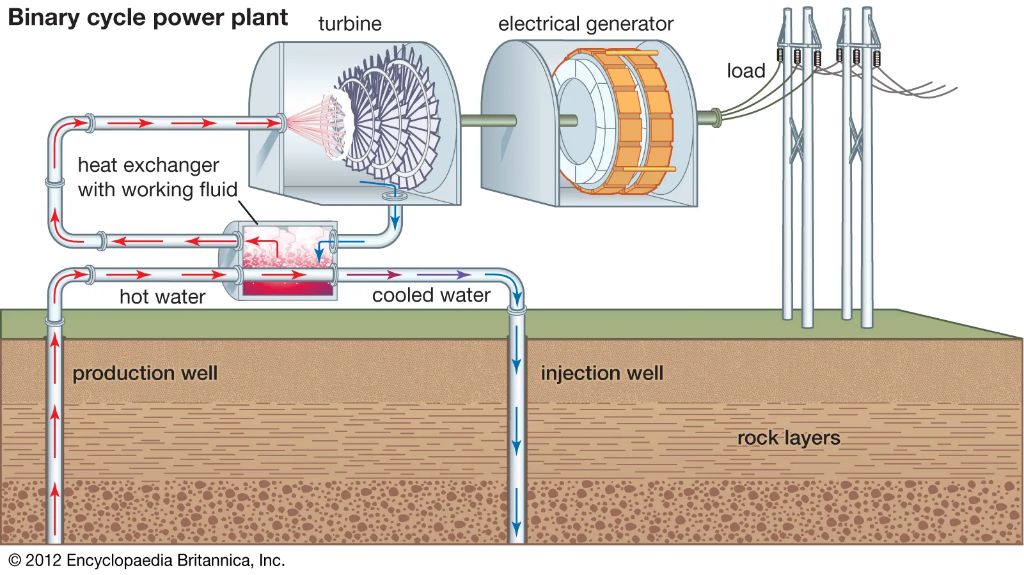
Enhanced Geothermal Systems (EGS) involve injecting fluid into hot dry rock reservoirs to create an artificial geothermal reservoir. The fluid helps to extract heat from the rocks before being pumped back to the surface to power a geothermal plant. EGS allows geothermal power production in areas without natural hydrothermal resources.2
Geopressured resources utilize hot brines trapped under high pressure. The heat and pressure of the brines can be used to generate electricity. Geopressured reservoirs contain water with temperatures higher than 150°C and are typically found at depths of 3-6 kilometers.
Efficiency of Geothermal Systems
Geothermal systems are generally quite efficient compared to other renewable energy technologies. The capacity factor, or the ratio of the actual energy produced divided by the maximum possible energy produced, for geothermal plants is around 90-95% according to the 2022 Global Status Report for Renewables by REN21 (https://www.ren21.net/gsr-2022/). This is much higher than solar PV (10-20%) or wind (35-40%). Geothermal plants can operate continuously throughout the year, unlike intermittent sources like solar and wind.
The typical lifespan of a geothermal power plant is 20-30 years with proper maintenance, comparable to other baseload technologies like nuclear or fossil fuels (https://www.linkedin.com/advice/0/how-does-geothermal-energy-compare-other-renewable). Over time, the underground geothermal reservoir can cool down from continuous extraction of heat, reducing the plant’s output. However, advanced technologies like enhanced geothermal systems (EGS) can sustain higher temperatures for longer periods.
The amount of useful heat that can be extracted from a geothermal reservoir depends on the temperature and volume of fluids available. High-temperature hydrothermal resources (>180°C) are ideal, but lower temperature reservoirs can also be harnessed using binary power plants. The installed geothermal capacity globally was about 17 GW in 2021, while the technical potential exceeds 200 GW according to the International Renewable Energy Agency (IRENA).
Geothermal Energy Sustainability
Geothermal energy is considered one of the most sustainable energy sources available today. It is classified as a renewable resource because the heat emanating from the Earth’s interior is constantly being replenished (Microsoft). The core of the Earth remains extremely hot, estimated to be over 5,000°C, providing an enormous and renewable source of thermal energy (Microsoft).
Geothermal power plants also have very low emissions compared to conventional power plants. According to the U.S. Department of Energy, geothermal plants release on average just 5% of the carbon dioxide emissions of a fossil fuel plant. Steam and gases discharged from geothermal plants are at atmospheric pressure and do not contribute significantly to greenhouse gases (Energy.gov). The geothermal water and steam that is injected back into the reservoir contains very little pollutants.
Additionally, geothermal plants have a small physical footprint and utilize minimal land space. The power plant itself occupies just a few acres while the wells and piping usually occupy less than 1% of the land where heat mining is occurring (Microsoft). This allows the rest of the land to be used for other purposes like farming or grazing. The small footprint makes geothermal powerplants ideal for even densely populated areas.
Global Geothermal Energy Use
Geothermal power plants currently operate in around 40 countries worldwide. The countries generating the most electricity from geothermal sources are the United States, Philippines, Indonesia, Turkey, New Zealand, Iceland, Kenya, and Mexico.
According to 2020 data from the International Renewable Energy Agency (IRENA), the United States leads globally, generating over 17,000 megawatts of geothermal power annually. The Philippines ranks second, producing 1,870 megawatts per year. Indonesia comes in third with 1,800 megawatts of geothermal electricity generated annually. Other top countries are Turkey (1,500 MW), New Zealand (1,000 MW), Iceland (775 MW), Kenya (700 MW), and Mexico (700 MW).
The top countries for geothermal electricity generation often have favorable geographic locations, such as along tectonic plate boundaries or volcanic belts. The abundance of high-temperature hydrothermal resources in these areas makes geothermal power production economical. However, advancements in technology are enabling geothermal development in countries without obviously ideal conditions.
Cost of Geothermal Energy
The levelized cost of electricity (LCOE) for geothermal energy has declined in recent years and become competitive with other energy sources. According to Global average LCOE of geothermal energy 2010-2022, the average LCOE for geothermal globally was around $0.07 per kWh in 2022. The International Renewable Energy Agency (IRENA) reports the LCOE for new geothermal projects commissioned in 2022 averaged $0.056/kWh, a 22% decrease from the previous year. This makes geothermal competitive with the LCOE for new natural gas and coal power plants.
Compared to other renewable energy sources, geothermal has a higher LCOE than onshore wind and utility-scale solar PV, which range from $0.03-0.05/kWh according to IRENA. However, geothermal provides consistent base load power, while solar and wind are intermittent. For regions with good geothermal resources, it can be a cost-effective clean energy solution. The LCOE can be as low as $0.04/kWh according to IRENA’s Geothermal Power Technology Brief.
Environmental Impacts
Geothermal energy systems can have both positive and negative impacts on the environment. On the positive side, geothermal plants emit far fewer greenhouse gases than fossil fuel plants. According to the U.S. Department of Energy, geothermal plants emit on average just 5% of the carbon dioxide of a natural gas plant per kWh (https://www.eia.gov/energyexplained/geothermal/geothermal-energy-and-the-environment.php). However, geothermal sites do release small amounts of greenhouse gases such as carbon dioxide, methane, ammonia, and hydrogen sulfide from geologic formations. The emissions levels depend on the site but are substantially lower than fossil fuels.
Geothermal energy production requires water to cycle through the system. Hot wastewater that returns to the surface can contain contaminants that must be disposed of properly to avoid impacts to the environment. Some geothermal sites reinject the water back underground. Surface discharge of hot wastewater into lakes and rivers can increase water temperature and affect ecosystems if not managed properly (https://www.ucsusa.org/resources/environmental-impacts-geothermal-energy).
There are also concerns about geothermal projects inducing small tremors through hydraulic fracturing and subsurface fluid injection. However, induced seismic events are generally minor and smaller in scale than natural earthquakes. With proper siting and monitoring, seismic impacts can be minimized (https://www.fws.gov/node/265252).
Future Outlook and Challenges
The future growth potential for geothermal energy is promising, with projections estimating it could provide around 3.5% of total global electricity generation by 2023 (The Future of Geothermal Energy). However, there are still challenges that need to be addressed.
One of the biggest barriers to large-scale adoption of geothermal energy is the high upfront capital costs required. Drilling geothermal wells thousands of feet into the earth and building power plants can cost millions of dollars before any energy is even generated (What is the future of geothermal energy?). Many companies and investors are hesitant about these large initial investments.
More research and development into enhanced geothermal systems could help make geothermal more financially viable. New technologies like co-produced fluids, hybrid power plants, and advanced drilling techniques may help reduce the costs and risks over time.
Improvements in seismic imaging, reservoir modeling, and management will also be important to maximize the productivity of geothermal reservoirs and ensure their long-term sustainability.
If these challenges can be addressed, geothermal power has the potential to play a major role in the global renewable energy mix and help nations work towards their emissions reduction goals.
Latest Innovations
There have been several recent innovations in geothermal technology that aim to improve efficiency and expand the potential for geothermal energy. Some key innovations include:
Enhanced Geothermal Systems (EGS) – These systems use hydraulic fracturing and injection wells to create artificial geothermal reservoirs in hot dry rock. Fluid is pumped underground, heated, and returned to the surface to generate electricity. EGS allows geothermal power development in areas without natural hydrothermal resources. According to the TWI Global, the US Department of Energy has invested over $500 million in EGS research and development.
Hybrid systems – Combining geothermal with solar PV, biomass, or fossil fuels can enable more flexible and reliable energy production. For example, geothermal-solar hybrid plants allow electricity generation to continue through the night. The European Parliament states these hybrid systems optimize the use of available energy sources.
Supercritical geothermal systems – Operating at ultra-high temperatures above 700°F and pressures above 3200 psi improves efficiency. Supercritical fluid extracts more heat from rocks and converts it into electricity. According to BloombergNEF, supercritical geothermal could enable access to a geothermal resource capable of providing over 100 GW of power generation capacity in the western US alone.
Conclusion
In summary, geothermal energy has several advantages that make it an efficient and sustainable energy source. The key points are:
- Geothermal energy is renewable and available 24/7, unlike solar or wind power.
- Modern geothermal plants can achieve high capacity factors of over 90%, meaning they can generate a steady baseload of power.
- Geothermal energy has a small land footprint per kWh compared to other renewables.
- CO2 emissions from geothermal plants are usually very low.
- Water use for geothermal is lower than some other energy sources.
- Capital costs are high but geothermal has low operating costs over decades of life.
- Total geothermal potential could meet global energy needs for 30,000 years.
Overall, geothermal stands out as an efficient form of baseload renewable energy that can sustainably meet a portion of the world’s electricity demand with minimal environmental impacts if developed responsibly.

